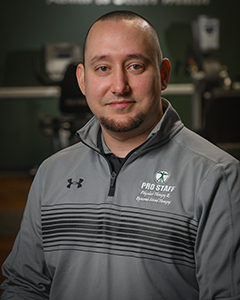Mindfulness and Physical Therapy: Cultivating a Healthy Mind-Body Connection
At Pro Staff Physical Therapy, healing is a journey that encompasses both the body and the mind. This philosophy is at the heart of integrating mindfulness into our physical therapy practices. Mindfulness, the art of being fully present and aware in the moment, has shown remarkable benefits in various aspects of healthcare, including physical rehabilitation. This approach is not just about addressing physical ailments; it’s about nurturing a holistic connection between mind and body, which is crucial for true healing and wellness. By incorporating mindfulness, patients can tackle physical challenges and cultivate mental resilience and emotional well-being. Join us as we uncover the transformative power of mindfulness in physical therapy and how it can redefine the healing experience.

What is Mindfulness and How Does it Work?
Mindfulness, in its essence, is the practice of being fully present and engaged in the moment, aware of your thoughts and feelings without distraction or judgment. This mental state is achieved by focusing on the present moment while calmly acknowledging and accepting one’s feelings, thoughts, and bodily sensations. The core principles of mindfulness involve attention, awareness, and acceptance. Attention refers to the practice of focusing on the present experience. Awareness allows for recognizing that experience, and acceptance involves observing these experiences without judgment.
Historical Roots and Modern Applications
The concept of mindfulness has its roots in ancient Buddhist meditation practices, but it has been adapted for modern secular use. Jon Kabat-Zinn, a molecular biologist, is credited with bringing mindfulness to the mainstream by developing his Mindfulness-Based Stress Reduction (MBSR) program in the late 1970s. MBSR and similar programs have since been used widely for a range of conditions, including stress, anxiety, depression, and chronic pain management.
The Science Behind Mindfulness
From a neurological perspective, mindfulness practice has been shown to produce changes in brain structure and function. Studies using MRI scans have demonstrated that mindfulness can increase gray matter density in brain regions associated with learning, memory, emotion regulation, and empathy. Other research indicates that mindfulness can decrease activity in the amygdala, the brain region responsible for fear and stress responses, reducing stress levels. Psychologically, mindfulness helps break the cycle of automatic negative thoughts and emotional reactions. By cultivating non-reactive awareness, individuals learn to observe their thoughts and feelings without being overwhelmed.
The Role of Mindfulness in Physical Therapy
In physical therapy, this mindful approach to understanding and relating to one’s physical experiences can enhance rehabilitation, making it more effective and holistic. A study involving patients with chronic pain, for example, found that those who engaged in mindfulness practices alongside physical therapy reported significantly lower pain levels and improved mobility compared to those who only received traditional physical therapy.
Incorporating mindfulness into physical therapy involves several strategies. Therapists may begin sessions with a brief guided meditation to center the patient’s focus and awareness. Therapists encourage patients to pay close attention to their breathing, bodily sensations, and emotional responses during exercises. This could involve focusing on the movement of a specific body part, noticing the breath while executing a movement, or observing thoughts and feelings that arise during therapy sessions. Patients practicing mindfulness alongside physical treatment often report a higher quality of life and a more profound sense of well-being through benefits including:
- Enhanced Pain Management: Mindfulness has been shown to alter pain perception. Patients practicing mindfulness report a decrease in pain intensity and a more manageable experience of chronic pain as they learn to separate the physical sensation of pain from the emotional distress it causes.
- Improved Patient Focus and Engagement: Mindfulness increases a patient’s engagement and focus during physical therapy sessions. Patients become more attuned to the exercises and the responses of their bodies, leading to more effective sessions and commitment to the rehabilitation process.
- Reduction in Stress and Anxiety: Mindfulness exercises help in reducing the stress and anxiety often associated with physical ailments and the recovery process. Techniques like deep breathing, guided imagery, and meditation can provide patients with tools to manage stress, fostering a more positive and relaxed approach to rehabilitation.
Incorporating mindfulness into your physical therapy routine offers long-term benefits, including improved mental health, enhanced stress resilience, and a deeper understanding of the connection between physical and emotional well-being. Over time, a mindfulness-infused physical therapy practice can lead to a more holistic approach to health, fostering long-lasting changes that positively impact your overall quality of life.
Practical Mindfulness Techniques for Patients
Simple Mindfulness Exercises for Daily Life
- Deep Breathing: Focus on taking slow, deep breaths, inhaling through the nose, and exhaling through the mouth. This can be done anytime and anywhere to reduce stress and increase focus.
- Mindful Walking: During a walk, concentrate on the sensation of your feet touching the ground, the rhythm of your steps, and the feel of the air against your skin. This helps anchor you in the present moment.
- Guided Imagery: Use visualization techniques to transport yourself to a peaceful place. This practice can help reduce anxiety and promote relaxation.
Mindfulness Practices for Specific Conditions
- For chronic pain: Engage in a body scan meditation, focusing on each body part and releasing tension with each exhale. Acknowledge any pain without judgment as you move through the body.
- For post-surgical recovery: Use mindfulness to tune into your body’s healing process. Visualize the affected area healing and strengthening each day.
- For mobility issues: Practice seated mindfulness exercises, focusing on the parts of your body that you can move comfortably and acknowledging their strength and function.
Tips for Maintaining Mindfulness
- Set aside regular times for mindfulness practice, making it a part of your daily routine.
- Be patient and kind to yourself; understand that mindfulness is a skill that takes time to develop.
- Use mindfulness apps or audio recordings for guided practices.
- Keep a journal to reflect on your mindfulness experiences and progress.
Implementing Mindfulness in Your Therapy Routine
Begin by discussing the incorporation of mindfulness with your physical therapist. They can introduce basic mindfulness techniques at the start or end of your sessions. Start with short, manageable practices, such as a few minutes of deep breathing or guided imagery, and gradually increase the duration as you become more comfortable with the practice.
Work collaboratively with your physical therapist to integrate mindfulness into your treatment plan. This might include setting aside time during each session for mindfulness exercises or incorporating mindful movement practices into your therapy routine. Your therapist can also provide guidance on how to remain aware of your body’s responses to different exercises and how to listen to your body’s signals.
Start Your Mindfulness Journey Today
Exploring mindfulness in physical therapy reveals a profound truth: healing is as much about the mind as it is about the body. By fostering a deep connection between mind and body, mindfulness practices empower patients to manage pain more effectively, engage more fully in their therapy sessions, and approach their rehabilitation with a positive and focused mindset.
Whether navigating physical rehabilitation or seeking ways to enhance your overall health, incorporating mindfulness can open the door to a more balanced, healthy, and fulfilled life. At Pro Staff Physical Therapy, we are committed to guiding and supporting you through this integrative approach every step of the way.
Pro Staff Institute, LLC, has a network of outpatient physical rehabilitation centers in New Jersey. Pro Staff was founded in 2010 by Frank Pavlisko and Michael Maffucci. Through Frank’s 25 plus years experience in Physical Therapy and Michael’s experience in Management Services, our goal is to exceed customer expectations by providing the highest quality of service in a fun, family, friendly, and encouraging environment.
PRO STAFF LOCATIONS
OFFERING CERTIFIED
HAND THERAPY
Managing Diabetes: The Role of Physical Therapy
Managing Diabetes: The Role of Physical Therapy As of 2024, approximately 38.4 million Americans, or 11.6% of the U.S. population, have diabetes. Of these, 29.7 million cases are diagnosed, while an estimated 8.7 [...]
Staying Active and Injury-Free During Summer Activities
Staying Active and Injury-Free During Summer Activities Summer is a fantastic time to engage in outdoor sports and physical activities. Whether playing soccer, tennis, cycling, or jogging in the park, staying active is [...]
The Importance of Posture: How Proper Alignment Can Prevent Pain and Injury
The Importance of Posture: How Proper Alignment Can Prevent Pain and Injury In today's fast-paced world, where many hours are spent over desks, smartphones, and computers, posture is often neglected. Poor posture can [...]




